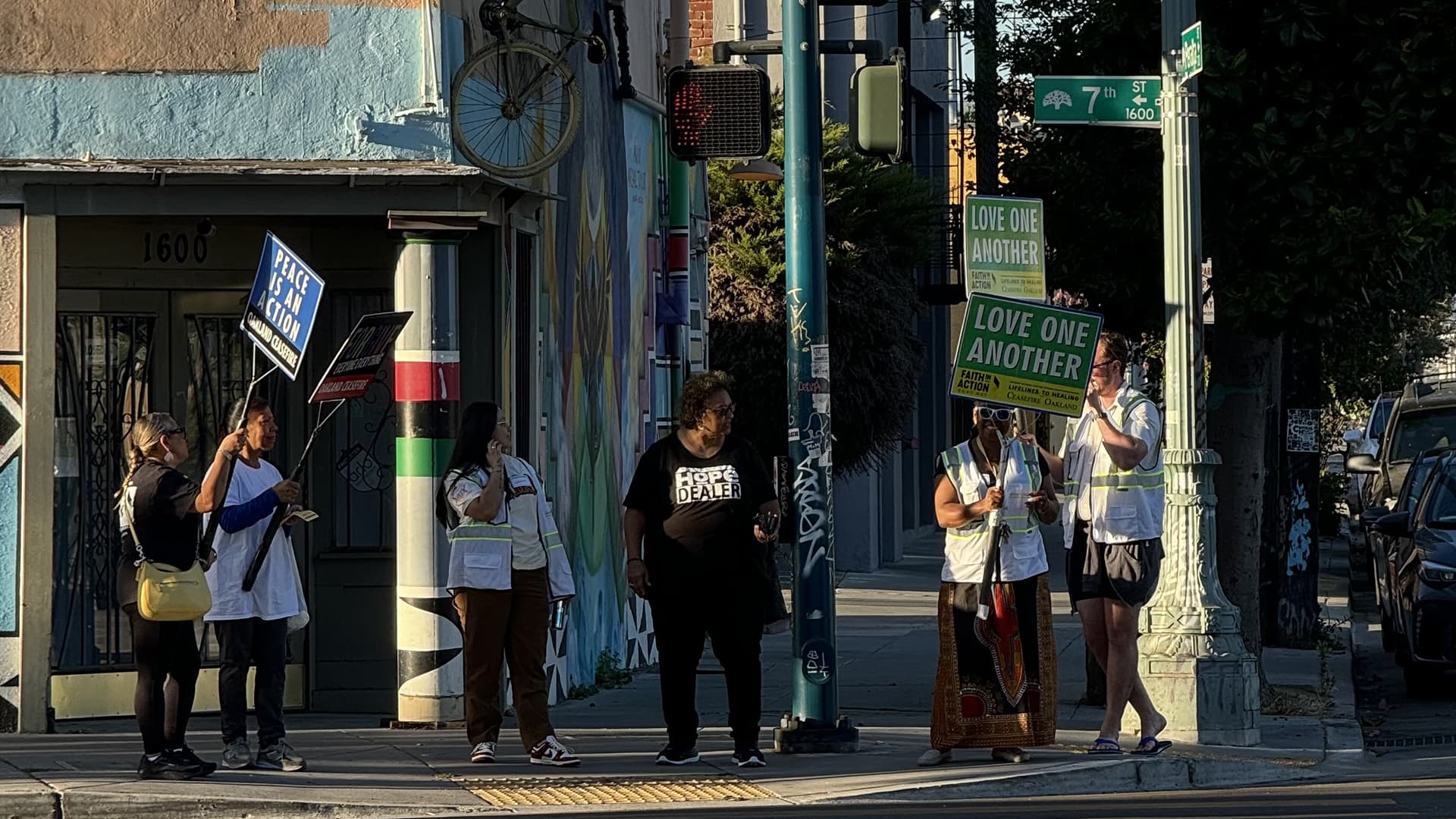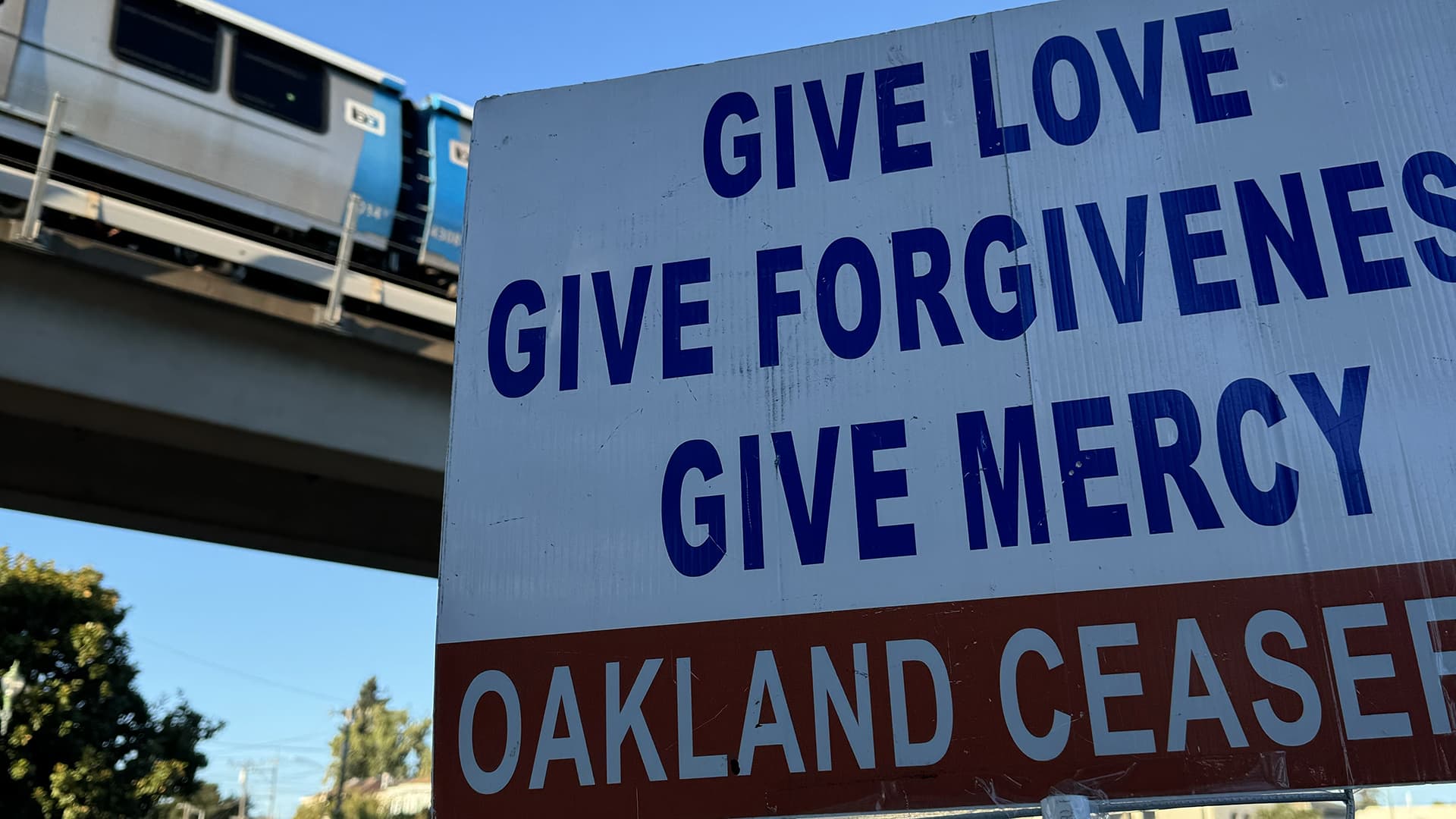
A safe place to live
There are some key principles that contribute to feeling safe: connections with our neighbors and belonging to a broader community, knowing that someone will answer 911 when you need help, and a city government that has tools in place to combat the cycles of violence and crime in order to support economic vitality. Ultimately Oakland’s long-term success depends on strengthening these core areas. In the short term, each faces a common enemy: people plainly don’t feel safe in their neighborhoods.
We do know, though, that Black and brown Oaklanders are the ones most at risk when people advocate for often overly broad tough-on-crime policies. As a gay Black man, I’m aware of the delicate tightrope our community walks when we strive for safer communities free of crime and violence.
I believe our path forward depends on making bold choices that address our fears of insecurity, while implementing solutions that strengthen bonds within our community.
My approach to public safety requires collaboration between residents, business leaders, and the city. We need to address the violent and property-related crimes head on, and pair that with community-sponsored activities and environmental design strategies that don’t solely rely on an overworked officer with a badge and a gun.
How we get it done:
- Activate public streets and vacant storefronts to deter crime through environmental design, eyes-on-the-street and community-building activities.
- Invest in afterschool programs and partnerships with Oakland Unified School District to provide community-based activities for Oakland youth.
- Partner job training centers with community colleges to offer skills-based learning opportunities and pathways to liveable wage jobs.
- Invest in Oakland’s award-winning Ceasefire strategies to reduce gang violence and gang-related shootings.
- Engage neighborhood leaders to identify community priorities and deploy our limited resources effectively.
- Seek State and Federal grant funding to expand public safety resources without increasing costs to the Oakland General Fund.
- Support and coordinate with de-escalation programs like the Department of Violence Prevention and MACRO to reduce reliance on officers as primary responders for non-violent situations.
- Retain and recruit officers from Oakland so that the Oakland Police Department reflects the neighborhoods being served.
- Provide de-escalation training to all police officers operating in Oakland to ensure they can effectively and non-violently respond to situations related to mental health and substance abuse challenges.
- Coordinate field operations and investigation efforts with other Bay Area cities, Alameda County, the State and Federal government to address organized crime in the region.
- Coordinate the Oakland Police Department with business district ambassadors and private security services to ensure officers are available to address the most dangerous and immediate concerns.
- Complement limited Field and Investigative Bureau resources with innovative technology solutions including privacy-friendly FLOC camera systems, traffic speed radar systems, and additional Shot Spotter installations.
- Support strategies that help Oakland end the Federal Oversight of the Police Department and reallocate funds and resources to strengthen the Oakland Inspector General.

What does this look like?
My approach centers on community collaboration and public space activation.
To combat the uptick of dangerous activity in our city – particularly District 3 – I plan to coordinate peace officer efforts with community safety programs to identify residents’ most pressing concerns. Oakland’s Ceasefire strategy has shown that it can work when it has the right support and communication. However, it cannot handle all crimes. By increasing coordination, we can allow de-escalation programs like MACRO respond to appropriate incidents through allowing our police officers to better prioritize their responses and more quickly respond to the most immediate concerns in District 3.
Additionally, Oaklanders deserve to know that they can get help when they call 911 or other city emergency services. The exasperating status quo where residents get no response – or an extremely delayed one – undermines the basic promise between our government and this community. This is an immediate concern that needs to be addressed, especially as the city still deals with a budget that hasn’t been fully balanced, and should involve coordinating with the county, state, and federal entities and representatives so that Oakland’s needs are met.
While current city representatives continue to highlight their favorite statistics to tell us everything is better, I believe the issue is far more nuanced. My neighbors continue to share real fears about public safety in our city. People are afraid to leave their cars on the street, and rightly so. In 2023 alone, 1 in 30 Oakland residents had their cars stolen – totaling nearly 15,000 vehicles. That’s a shocking statistic reflecting the size of the problem at hand. It’s not surprising that many feel that we’re experiencing a public safety crisis. While the number of stolen vehicles has begun to decline so far in 2024, I believe it’s the job of our representatives to honor people’s concerns and trauma, and not dismiss people’s heartfelt emotions and concerns.
Now is also the time to activate our neighborhoods and our public spaces, not abandon them. Let’s build activities in our neighborhood streets and merchant districts that bring us together. Let’s create community-based school programs that allow our kids to play safely and be around positive influences. Let’s bring joy back to all of our parks, streets, and neighborhoods – and generate economic opportunity at the same time. At the height of Covid-19, I created two programs that highlight what success looks like. Slow Streets, Oakland’s neighborhood traffic calming program that brought friends, families, and neighbors out to play; and Flex Streets, a merchant district activation program that created a space for people to share their food, small business, and culture. We need to foster that unique sense of community that is rich in Oakland, the sense of belonging and community, and recognize that we are safer together.
